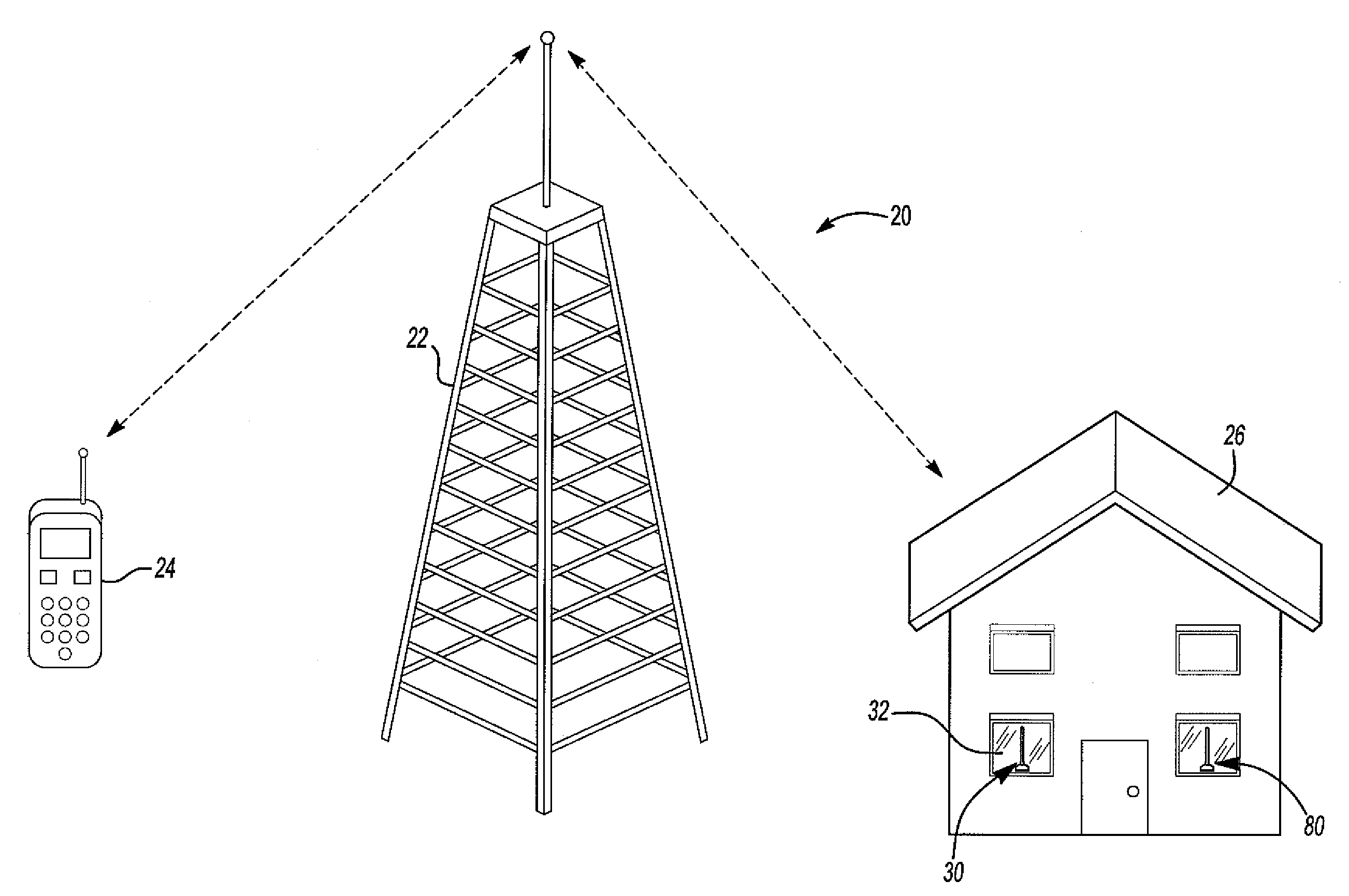Extending wireless communication RF coverage inside building
a wireless communication and building technology, applied in the field of wireless communication systems, can solve the problems of reducing the accuracy of loss estimation, and reducing the repeater gain
- Summary
- Abstract
- Description
- Claims
- Application Information
AI Technical Summary
Benefits of technology
Problems solved by technology
Method used
Image
Examples
Embodiment Construction
[0024]FIG. 1 schematically illustrates a wireless communication system 20 showing selected portions of the system. A base station 22 facilitates wireless communication with a plurality of mobile units 24. Such communications occur in a known manner.
[0025]The example of FIG. 1 is also well suited for providing wireless radio frequency (RF) signal coverage within a building 26, which may be a home, a small enterprise, or part of an office building, for example. In the illustrated example, a repeater antenna assembly 30 is associated with at least one window 32 of the building 26. The repeater antenna assembly 30 provides at least a minimum desired inside link budget to provide RF coverage within the building 26 based upon signals received from the base station 22. The example repeater antenna assembly 30 is designed to operate at the highest possible gains that avoid positive feedback and base station receiver desensitization.
[0026]Base station receiver desensitization does not occur ...
PUM
 Login to View More
Login to View More Abstract
Description
Claims
Application Information
 Login to View More
Login to View More - R&D
- Intellectual Property
- Life Sciences
- Materials
- Tech Scout
- Unparalleled Data Quality
- Higher Quality Content
- 60% Fewer Hallucinations
Browse by: Latest US Patents, China's latest patents, Technical Efficacy Thesaurus, Application Domain, Technology Topic, Popular Technical Reports.
© 2025 PatSnap. All rights reserved.Legal|Privacy policy|Modern Slavery Act Transparency Statement|Sitemap|About US| Contact US: help@patsnap.com



